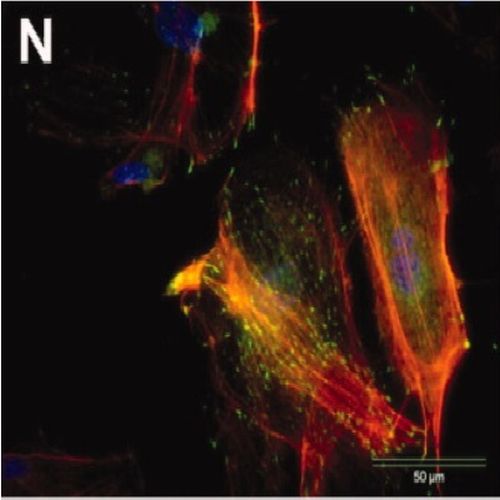Biological relevance of ion energy in performance of human endothelial cells on ion-implanted flexible polyurethane surfaces.
To improve the biocompatibility of polyurethane (PUR), we modified the surface by irradiation with different ions (Carbon; C, Oxygen; O, Nitrogen; N, or Argon; Ar) at 0.3-50 keV energy and doses of 1,00E+13 - 1,00E+15 ions/cm(2). The effects of ion implantation using different ion energies and densities were observed on adhesion, proliferation, and viability of human umbilical vein endothelial cells (HUVECs). The long-term in vitro stability of ion-implanted PUR was also investigated. Ion irradiation moderately affected the surface roughness (R(a)), but strongly enhanced the work of adhesion (W(a)). Cell adhesion was markedly improved on O-, N-, and Ar-, but not on C-implanted PUR surfaces. Medium ion energies and lower ion doses produced the best HUVEC attachment and proliferation, indicating the importance of choosing the proper range of energy applied during ion irradiation. In addition, apoptosis rates were significantly reduced when compared with unmodified PUR (uPUR). N implantation significantly protected the surface, although C implantation led to stronger surface erosions than on uPUR. In total, ion implantation on flexible PUR surfaces strongly improved the material surface characteristics and biocompatibility. Electron beam ion implantation within an appropriate energy window is thus a key to improving flexible PUR surfaces for clinical use to support endothelial cell performance. Thus, it can contribute to designing small-diameter grafts, which are in great demand, towards vascular tissue engineering applications.

- J Biomed Mater Res A 2010 Apr;93(1):258-68
- 2010
- Medical Biology
- 19557788
- PubMed
Enabled by:
